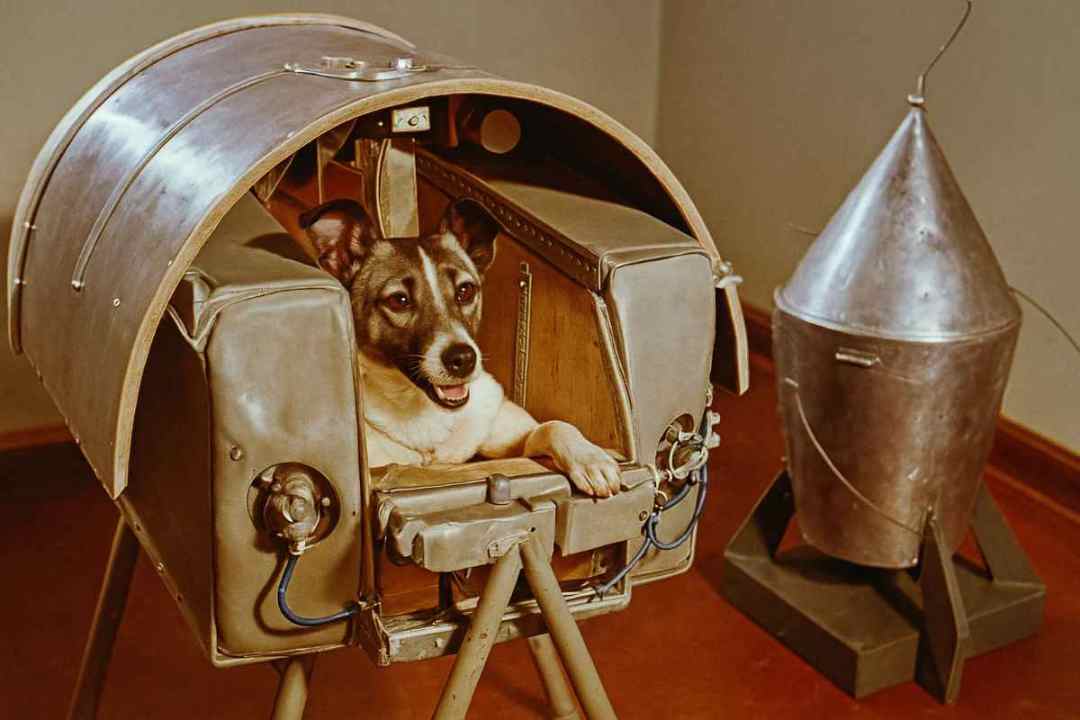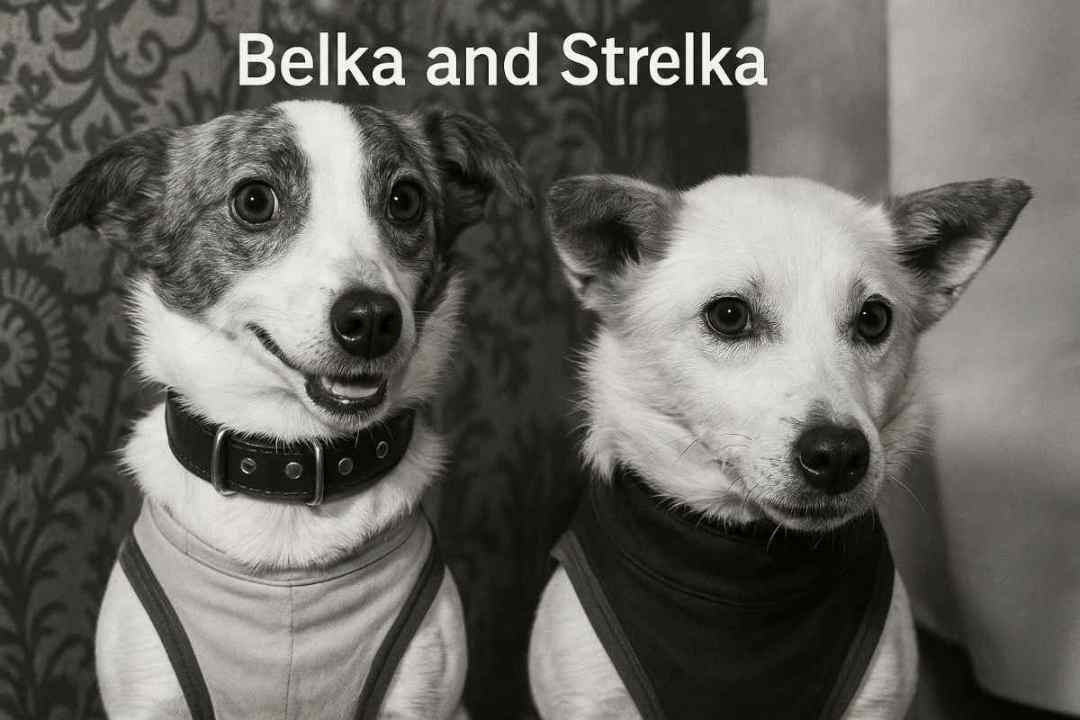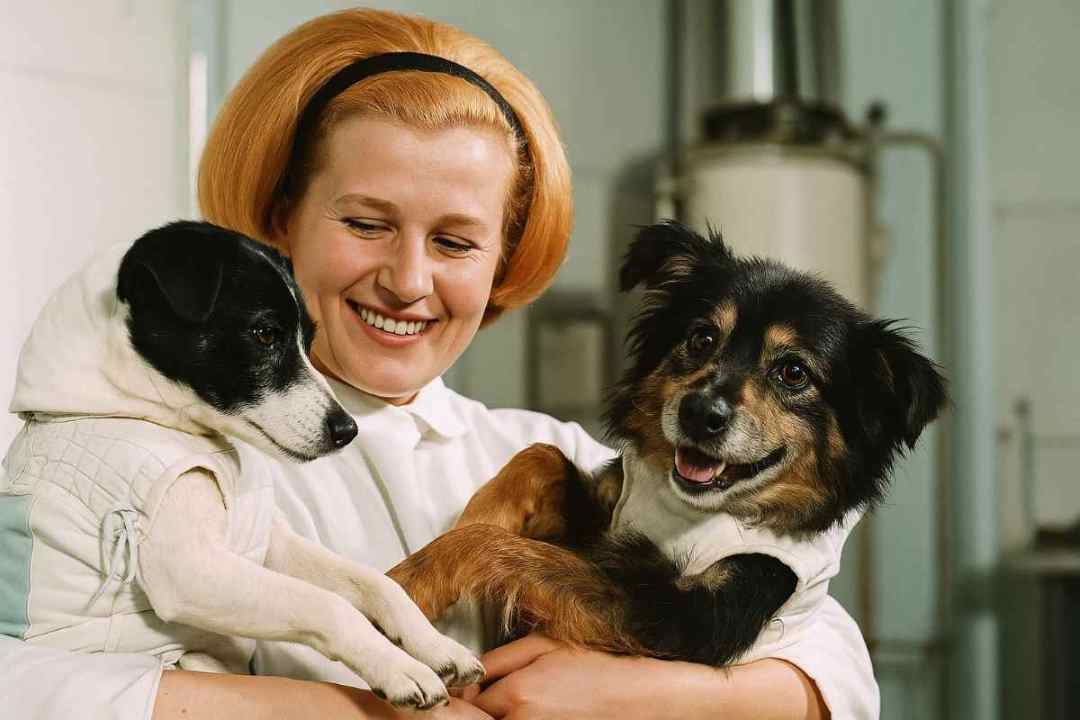
Animal Cosmonauts
The pioneering animals that paved the way for human spaceflight in the Soviet space program.
The Space Dogs Program
Before humans could venture into the unknown environment of space, scientists needed to understand how living organisms would respond to the stresses of spaceflight—from the intense g-forces of launch to the weightlessness of orbit, and the radiation beyond Earth's protective atmosphere.
The Soviet Union's animal program primarily used dogs, unlike the American preference for primates. Dogs were chosen for their trainability, ability to sit still for long periods, and adaptability to confined spaces. Most were stray female dogs of mixed breed, selected for their calm temperament and small size.
Between 1951 and 1966, the Soviet Union launched dozens of dogs into space, with missions ranging from suborbital flights to multi-day orbital missions. Their experiences and biological data provided crucial insights that made human spaceflight possible.
Famous Space Dogs

Laika
November 3, 1957
Laika became the first animal to orbit Earth aboard Sputnik 2. Her mission was always planned to be one-way, as the technology for a safe return had not yet been developed. Her story caused both scientific acclaim and ethical controversy.

Belka and Strelka
August 19, 1960
These two dogs became the first animals to safely return from orbit, spending over 25 hours in space aboard Korabl-Sputnik 2 (Sputnik 5). Their successful mission paved the way for Yuri Gagarin's flight less than a year later. Strelka later gave birth to puppies, one of which was gifted to U.S. President Kennedy's family.

Veterok and Ugolyok
February 22, 1966
These dogs set a canine spaceflight endurance record by spending 22 days in orbit aboard Cosmos 110. Their mission studied the effects of prolonged weightlessness and cosmic radiation, and their record for the longest spaceflight by dogs remains unbroken.
Training and Selection
Selection Criteria
- Female dogs were preferred for their more docile temperament and because the spacesuit's waste collection system was simpler to design for females.
- Small size (6-7 kg) was essential to fit within the confined spacecraft cabins.
- Light-colored fur made the dogs more visible in photographs and films inside the capsule.
- Strays were chosen because they had already adapted to harsh conditions and temperature extremes.
- Ages between 2-6 years were ideal, providing mature but healthy subjects.
Training Regimen
- Dogs were gradually confined in smaller and smaller cages to accustom them to the tight quarters of a space capsule.
- They wore spacesuits for increasingly longer periods to adapt to the restrictive garments.
- Centrifuge training exposed them to the g-forces of launch and reentry.
- Vibration stands simulated the shaking of a rocket launch.
- They were trained to eat a special gel-like food from an automatic dispenser.
- Some dogs were placed in isolation chambers to prepare them for the sensory deprivation of spaceflight.
The dogs' training went beyond mere physical conditioning. Scientists and handlers worked to develop psychological resilience in the animals, ensuring they would remain calm during the stress of spaceflight. The bond between the dogs and their handlers was considered crucial to the mission's success.
Scientific Contributions
The animal space program made invaluable contributions to our understanding of spaceflight's effects on living organisms. Key areas of study included:
Physiological Effects of Weightlessness
By monitoring the dogs' vital signs during flight, scientists gained the first data on how mammalian cardiovascular and respiratory systems respond to prolonged weightlessness. This research revealed changes in blood distribution, heart rate, and blood pressure that would later be observed in humans.
Radiation Exposure
Space dogs provided the first data on the biological effects of cosmic radiation beyond Earth's protective magnetosphere. Tissue and blood samples taken before and after flights helped scientists assess radiation damage and develop protective measures for human spaceflight.
Life Support Systems
The dogs' missions were crucial for testing spacecraft environmental control systems, including air purification, temperature regulation, and food and water dispensers. These tests directly informed the design of life support systems for human spacecraft.
Reentry and Recovery
After early missions where animals did not survive reentry, engineers refined capsule designs and recovery procedures. Belka and Strelka's successful return demonstrated that living organisms could survive the entire spaceflight experience, from launch to landing.
Other Animals in Soviet Space Research
While dogs were the most famous animal cosmonauts, the Soviet space program employed various other species for different research purposes:
Tortoises
In 1968, the Zond 5 mission carried two Russian tortoises around the Moon and back to Earth. These tortoises became the first living beings to travel to the Moon (though they did not land). They lost approximately 10% of their body weight but showed no loss of appetite after their journey.
Mice and Rats
These rodents were frequently included in biological packages on various missions. Their rapid reproductive cycle made them valuable for studying genetic effects of spaceflight across generations.
Rabbits
Used primarily in suborbital flights, rabbits provided data on the effects of high-altitude flight and weightlessness on larger mammals before moving to dog experiments.
Insects and Plants
Fruit flies, meal worms, and various plants flew on numerous missions to study cell division, development, and genetic changes in simpler organisms exposed to space conditions.
Together, these varied animal studies provided a comprehensive picture of how different biological systems respond to the space environment. This research was essential for understanding the risks and requirements of human spaceflight.
Ethical Considerations and Legacy
The use of animals in early space exploration raises ethical questions that continue to be debated. By today's standards, some aspects of the program—particularly missions like Laika's where no survival was possible—would be considered ethically problematic.
However, in historical context, these animal missions were conducted at a time when there was no other way to assess the safety of spaceflight for humans. The Soviet scientists generally showed concern for the animals' welfare within the constraints of their scientific and national objectives.
In modern Russia, the space dogs have been commemorated in various ways:
- Monuments to Laika and other space dogs in Moscow and other cities
- Postage stamps featuring famous canine cosmonauts
- Museum exhibits at the Memorial Museum of Cosmonautics in Moscow
- Films, books, and other media celebrating their contributions
The animal space program's legacy extends beyond the scientific data it gathered. These pioneering animals captured the public imagination and became symbols of courage and exploration, helping to humanize the technological achievements of the space race.